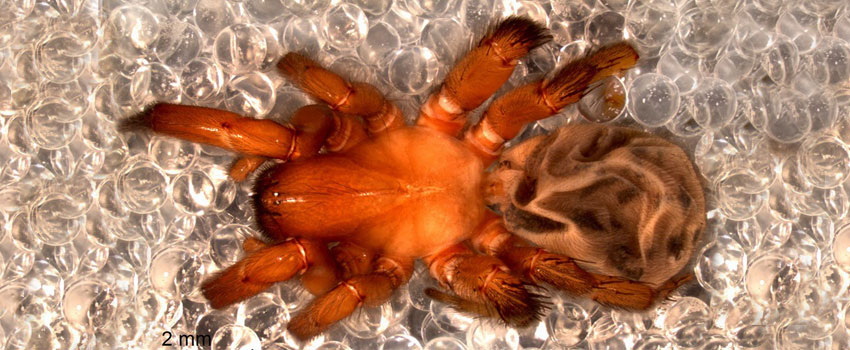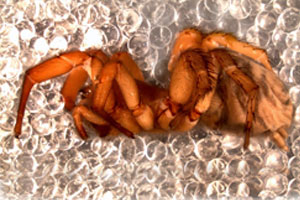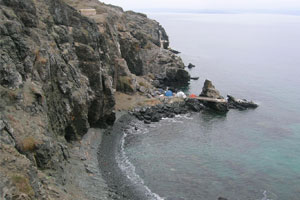- News
Researchers discover and describe Chañaral Island spider with characteristics similar to species from Africa

The arthropod, whose sister groups can be found in Namibia, would share a common pattern with scorpions and vaquitas on the island: “gigantism.”
Researchers Jaime Pizarro-Araya and Cristian Grismado, from the Ecological Entomology Laboratory of the University of La Serena and the Arachnology Division of the Argentine Museum of Natural Sciences Bernardino Rivadavia, respectively, have discovered and described a new species of arthropod, the spider of the Chañaral Island, belonging to the Humboldt Penguin National Reserve, located in the Atacama Region.
In an article published in the prestigious journal Zootaxa (ISI), the researchers point out that Cyrioctea islachanaral Grismado & Pizarro-Araya 2016 (Araneae, Zodariidae), surprisingly, shares morphological characters with some southern representatives of this genus from Africa, and that the new species is notably larger in size than the other representatives from South America.
 Jaime Pizarro-Araya, academic at the Department of Biology of the University of La Serena, explained that “the species is endemic to the island, which is interesting considering that the sister groups are found in Namibia, that is, another element that shows taxa with gondwanic distribution. "It also makes us think that this spider is part of a pre-desert fauna, that is, it occupied these ecosystems before the rise of the Andes Mountains."
Jaime Pizarro-Araya, academic at the Department of Biology of the University of La Serena, explained that “the species is endemic to the island, which is interesting considering that the sister groups are found in Namibia, that is, another element that shows taxa with gondwanic distribution. "It also makes us think that this spider is part of a pre-desert fauna, that is, it occupied these ecosystems before the rise of the Andes Mountains."
Regarding the size of the species, the researcher maintained that the spider measures about one centimeter, being larger than its sister groups. In this sense, he indicated that it would share a common pattern with some species of scorpions (Brachistosternus roigalsinai) and cows (Praocis spinolai) of the place: “gigantism”.
The ULS researcher stated that "all spiders have venom, which they use to immobilize their prey, although the bite of this spider and the species of the Zodariidae family do not represent any danger to humans."
In the article published in Zootaxa, the researchers also describe, for the first time, the male of the species Cyrioctea cruz, previously known north of Coquimbo.
 Description of endemic species in the Reserve
Description of endemic species in the Reserve
The researchers are part of a group of professionals from various institutions that between 2012 and 2013 began a series of arthropological expeditions to Chañaral Island, the largest in the Humboldt Penguin National Reserve, also composed of the Choros and Damas islands, both belonging to the Coquimbo Region.
“Due to the continuous studies carried out in these island areas, we have described endemic species that are currently in the conservation category, eg, Gyriosomus granulipennis (Coleoptera: Tenebrionidae), in addition to having described the assemblages of beetles and scorpions, all endemic fauna of these island desert ecosystems of Chile," said Pizarro-Araya, who added that no studies had been done with arthropods in the Reserve and that " "There is almost absolute ignorance of the biodiversity of the place."
The Rector, Dr. NIbaldo Avilés, appreciated the contribution being made by the researchers from the Ecological Entomology Laboratory, who with the support of the Research and Development Department, "have led studies on endemic species, especially in the northern zone of Chile , thus contributing to evaluating the conservation status of insects and arachnids. These are investigations with regional and also national relevance, in accordance with our institutional policy.”
It should be noted that the expeditions carried out to these islands have been financed by the Research and Development Directorate of the ULS, the Bernardino Rivadavia Argentine Museum of Natural Sciences and other national universities, in addition to the logistical support of CONAF.
